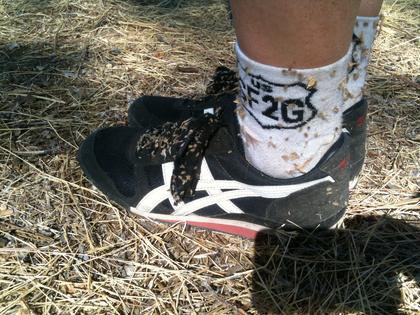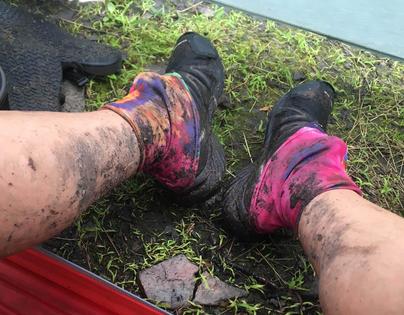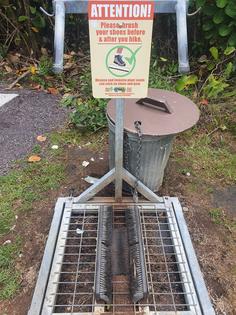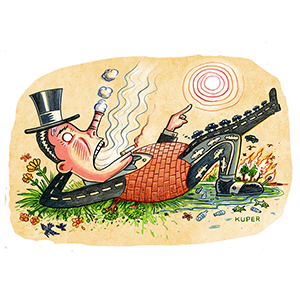Those seeds clinging to your hiking socks may be from invasive plants – here's how to avoid spreading them to new locations
Published in Science & Technology News
With spring settling in across the U.S. and days lengthening, many people are ready to spend more time outside. But after a walk outdoors, have you ever found seeds clinging to your clothes? Lodged in your socks and shoelaces? Perhaps tangled in your pet’s fur? While most of us don’t give these hitchhikers much thought, seeds and burrs may be the first signs of invasive plant spread.
Certain species of non-native invasive plants produce seeds designed to attach to unsuspecting animals or people. Once affixed, these sticky seeds can be carried long distances before they fall off in new environments. With favorable conditions, they can become established quickly and outcompete native plants.
Outdoor recreation has expanded at a record pace across the U.S. in recent years. Overcrowding in outdoor spaces has many harmful effects, from degrading trails to accelerating the introduction and spread of invasive plants.
As a recreation ecologist and an avid hiker, I study how people inadvertently spread invasive plants along trails. There are simple things that everyone can do before, during and after going outdoors to avoid picking up plant hitchhikers and help maintain trail systems for others to enjoy.
Invasive plants are non-native species that can harm the environment, human health and the economy when they are introduced into new areas. However, not all non-native plants are invasive.
Plants with invasive capabilities tend to grow quickly, adapt easily to many different environmental conditions, produce seeds in vast quantities and successfully disperse and germinate them. These characteristics enable the plants to spread efficiently to different areas. Many vectors help invasive plants disperse, including birds, animals, wind, water and humans, via clothing, shoes, pets, gear and vehicles.
Invasive plant seeds tend to be small in size, high in number and hardy. They can persist in soil for many years, remaining viable and ready to germinate when conditions are right.
These seeds will usually germinate earlier in spring than those of native plants and keep their leaves until late fall, crowding out and outcompeting native varieties. Each species produces seeds on a particular schedule – annual, biennial or perennial – and at a specific time. For example, invasive biennial garlic mustard releases seeds every two years in late spring.
Invasive plants have many harmful ecological impacts. One of the most familiar U.S. examples is kudzu, a climbing vine that has smothered trees across the Southeast.
Kudzu grows prolifically, outcompeting native vegetation. It also alters the nitrogen cycle by increasing soil nitrogen levels and releasing nitric oxide, a gas that reduces air quality and promotes ground-level ozone pollution.
In the western U.S., carpets of invasive grasses, such as cheatgrass and medusahead, create highly flammable fine fuels. Their presence makes wildfires more frequent and intense.
Some invasive plants directly threaten human health. Giant hogweed is an herb in the carrot family that can grow 15 to 20 feet tall. Its poisonous sap can cause severe skin burns. Others, such as poison hemlock and water hemlock, are highly toxic to humans and animals if consumed.
Managing invasive plants, animals and insects is a growing problem, with costs that run into billions of dollars annually. A 2022 study estimated the annual cost of managing biological invasions in the U.S. at about US$21 billion as of 2020.
Invasives are especially threatening for remote, biodiversity-rich places like Antarctica, where remoteness and geographic isolation promote endemic species – those only found in a particular geographic region. These endemics evolve in the absence of natural competitors and predators, so introducing invasives can have catastrophic consequences.
Many invasive plants thrive on disturbed soil. Decades of research has shown that recreational trails promote the introduction of invasive plant species into natural and protected areas, including national parks and national scenic trails like the Appalachian Trail.
The Appalachian Trail is the longest hiking-only footpath in the world, extending almost 2,200 miles from Georgia to Maine. More than 3 million visitors hike on some portion of it every year. Invasive plants commonly found along the trail include garlic mustard, multiflora rose and purple loosestrife.
In a recent study, I worked with the U.S. Geological Survey to investigate Appalachian Trail hikers’ invasive plant knowledge, perceptions, and behaviors. We found that most hikers were unaware of this issue. As a result, few took precautions to avoid contributing to it.
Here are things that concerned hikers can do to help manage invasive plants:
– Identify and report sightings of invasive plants. The more land managers know about where these species are present, the more effectively they can monitor and manage their spread.
– Smartphone apps, like Early Detection & Distribution Mapping System EDDMapS, iNaturalist and Wild Spotter, make this task easier. Or you can search and report by state. Simply take a picture and identify and report when and where you see invasives.
– Arrive with clean gear. Cleaning shoes, clothing and equipment before and after going outdoors is one of the most effective ways to minimize invasive plant introduction and spread. The North American Invasive Species Management Association’s PlayCleanGo campaign has installed boot brush stations at trailheads to remove seeds lodged in boot treads.
– Choose clothing and shoes carefully. Certain surfaces, such as uncovered socks, shoelaces, fleece and Velcro, are more seed-friendly than smoother materials such as nylon. Wearing pants that are uncuffed and pocketless to minimize snag points and fastening gaiters over shoes are easy ways to repel plant hitchhikers. Gaiters will also keep pebbles and mud out of your boots.
– Follow the Leave No Trace principles, which outline minimum-impact strategies for visiting the outdoors. For example, stick to marked formal trails to avoid dispersing invasive plants off-trail. Camp on designated or well-established campsites, and don’t transport firewood between sites – use certified or local firewood and hay. Clean your pets and vehicles as well as your clothes before and after hitting the trail.
People who want to do more to protect the outdoors can take a free Leave No Trace online course and take the PlayCleanGo Pledge to make a difference with their actions.
This article is republished from The Conversation, an independent nonprofit news site dedicated to sharing ideas from academic experts. The Conversation is trustworthy news from experts, from an independent nonprofit. Try our free newsletters.
Read more:
Once the Callery pear tree was landscapers’ favorite – now states are banning this invasive species and urging homeowners to cut it down
A century after the Appalachian Trail was proposed, millions hike it every year seeking ‘the breath of a real life’
Megan Dolman has received travel funding from the School of Geography and the Environment and Brasenose College, University of Oxford.













Comments